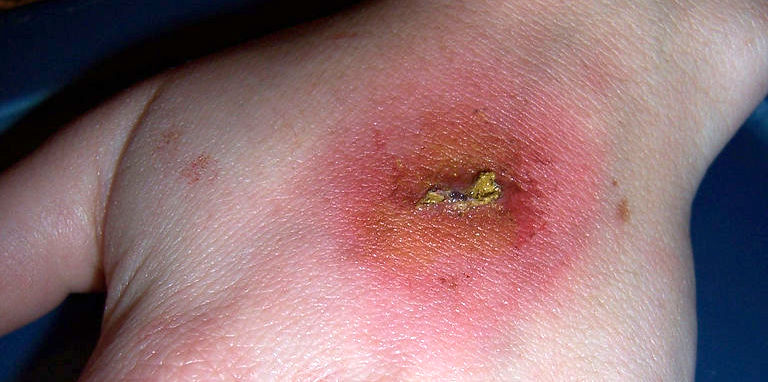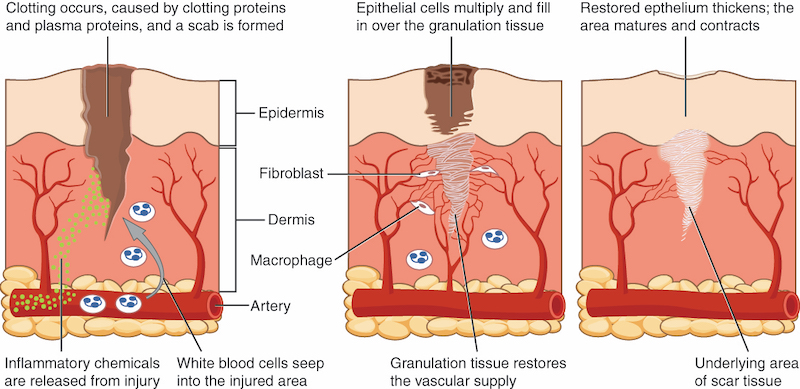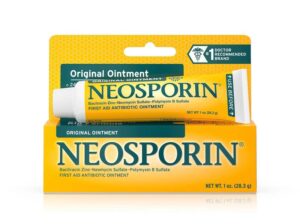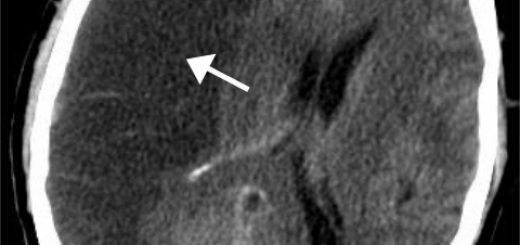How to Tell if a Cut is Infected
While the skin is normally a flexible and resilient barrier to the outside world, wounds that break the skin are all at risk of becoming infected. Harmful germs (bacteria) can prevent healing, increase your risk of scarring, and even spread to other parts of your body.
Knowing how to spot the warning signs of an infected wound is an important skill for any first aider. In this first aid blog post, we’ll look at how to tell if a cut is infected, and when to seek medical attention.
What Does an Infected Cut Look Like?
A wound that is infected may show the following signs and symptoms:
- Redness (erythema) or red streaking spreading from the cut
- Elevated temperature around the wound, warm skin
- White, yellow or green pus in or leaking from the wound
- Fever
- Swollen glands
- Increasing pain around the cut
The person may develop a fever (high temperature) and chills.
Sometimes it can be difficult to tell if there is spreading redness around a wound. To compare the spread of a wound, take photos of it every few hours or draw a circle around it to mark the area of redness.
As the infection progresses, you may notice new symptoms developing. Be sure to watch out for red streaks spreading from the cut toward the heart.
If you notice any of these symptoms, it is best to seek immediate medical attention, especially if you have a weakened immune system.

Infected wound on hand
How to Treat an Infected Cut
An infected wound needs professional medical treatment. An antibiotic may be required, along with swabs of the wound or drainage of pus. Do not delay seeking medical advice if you are concerned about a wound!
Wound infections can cause complications such as scarring, delayed healing, and even blood poisoning (sepsis). An infection with the bacteria that causes Tetanus can even be fatal, so early medical treatment is vital to fight the infection.
Your provider may clean the affected area with an antibiotic solution or apply topical antibiotics. In severe cases, surgery may be required to remove dead tissue or drain pus. If the infection is severe enough, you may need to go to urgent care or the emergency room.
However, there are several steps that you can take at home before seeking immediate medical attention.
How to Treat an Infected Cut at Home
Once an infection has taken hold, traditional soap and water will no longer be enough on its own. For minor wound infections there are a few wound care procedures that can help you begin the healing process. However, you should not use these remedies for severe infections or on open wounds.
- Continue to keep the area clean by washing around the cut with warm soap and water. Avoid washing the wound directly as this could cause further irritation.
- Fully pat the wound dry, since excess moisture can worsen the infection
- Apply an OTC topical antibiotic cream such as Bacitracin, Polysporin, or Neosporin
- Alternately, petroleum jelly may be used to shield the cut from bacteria and also prevent scarring
- Apply a sterile bandage or gauze to cover the cut
- Acetaminophen (Tylenol) can help alleviate pain
Is My Cut Infected or Healing?
According to the US National Library of Medicine, MedlinePlus.Gov, if a cut is healing, it should gradually begin to look better. Wounds heal in stages, and the larger the wound, the longer it will take to heal.
It should be noted that people with Diabetes or immune system disorders are at higher risk for developing infections.
What are the Stages of Wound Healing?
Below are the four phases of how wounds heal:
- Hemostasis, 2-5 Minutes: The bleeding stops as blood clots form to protect the wound.
- Inflammatory, 2-5 Days: The scab forms and the wound swells slightly, becoming red or pink and tender. The body’s immune system kicks into gear as white blood cells start to fight bacteria and repair the wound.
- Proliferation, 1-3 Weeks: Red blood cells create collagen, repair broken blood vessels, and new tissue begins to grow to cover the wound (epithelialization).
- Remodeling/Maturation: 4 Weeks+: The wound becomes stronger and gains in flexibility as the collagen fibers reorganize and the scar forms. The scar will continue to mature and eventually fade over time, which can take up to 2 years.
Can an Infected Cut Heal on its Own?
Yes, many minor wound infections can heal on their own. However, if a larger wound becomes infected, or if it becomes too severe, you must seek medical attention.
Most minor cuts heal within two weeks without any need for further treatment. If your cut is taking longer than this to heal, or if you have a fever or chills, the wound has a foul smell or if there are red streaks radiating from the cut, your wound may have a severe infection and you should seek medical attention.
When to Call the Doctor
Seek medical attention right away if you have:
- Black edges around the cut. This could be a sign of tissue dying.
- Redness, increased pain, excessive pus or clear fluid around the injury.
- Bleeding that will not stop after 10 minutes of direct pressure
- Fever of 100°F (37.7°C) or higher for longer than 4 hours
- A wound that has broken stitches or the staples have come out too soon
- Pain at the site of the wound that will not go away, even after pain medicine
These could all be signs of infection that can lead to serious complications.
Best Antibiotic for an Infected Wound
When it comes to treating more severe infections, your doctor will prescribe a clinical antibiotic such as amoxycillin or doxycycline. But for a minor wound infection, you can buy an over-the-counter antibiotic cream. Three of the most commonly used OTC antibiotic ointments differ by active ingredients.
Bacitracin: One Active Ingredient
- Ingredients: Bacitracin
- Avg cost of a 1oz tube $5.39 (according to GoodRx)
Polysporin: Two Active Ingredients
- Ingredients: Bacitracin, Polymyxin B
- Avg cost of a 1oz tube $7.29
Neosporin: Three Active Ingredients
- Ingredients: Bacitracin, Neomycin, Polymyxin B
- Avg cost of a 1oz tube $7.14
There are often generic versions of these available as well at lower costs, depending on availability at your local pharmacy.








thanks it helped